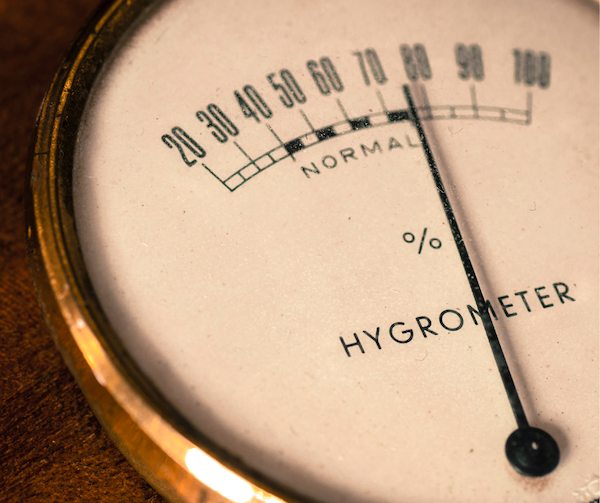Excess humidity in any space can be a concern but it can be an especially unwelcome guest in commercial buildings. Whether you need to prevent damage to your merchandise, are worried about potential health risks, or you want to prevent patron and employee discomfort, keeping humidity levels within a normal range is essential for business owners. Humidity is more than just a nuisance; it can cause undo strain on your HVAC system which can lead to higher utility bills, an increased need for repairs, and a reduced lifespan of the unit. Thankfully, there are some steps you can take to avoid the negative impacts of excess humidity in your commercial building.
Analyze your Humidity Levels

To test the humidity levels in your building, you will either need to purchase a hygrometer or hire a professional for an indoor air quality test. If you choose to get an indoor air quality test, you have the added benefit of knowing if any harmful toxins are present before they become an issue. Air quality tests are also helpful in finding out the source of the humidity so you can remedy the problem without any guesswork.
Setting the Optimal Humidity Level
If the conditions are too dry you may experience static electricity, dry skin, dry noses and lips as well as scratchy throats. If it is too humid it can make the temperatures, feel higher than they are which is not only uncomfortable but can also make cooling down more difficult. High humidity can exacerbate existing health conditions such as asthma, COPD, heart disease and high blood pressure, allergies, and more.
While you may want to experiment with humidity levels to see what is most comfortable, according to the EPA, the ideal relative humidity of a building should be between 30% to 50% to ensure your space is not too humid nor too dry.
Find the Source
If you know that your humidity levels are too high, solving the problem requires understanding where the humidity is coming from. Common culprits are:
- Poor ventilation in spaces such as kitchens or restrooms
- Leaks in the plumbing
- Poor sealing around windows and doors
- A large number of people in the building
- Changes in the outdoor climate

Solutions to High Humidity Levels
- Improve ventilation by installing exhaust fans or energy recovery ventilation (ERV) systems in particularly moist rooms or areas.
- Seal air leaks in the foundation, walls, and roof and around the windows and doorways.
- Install humidity sensors to monitor and control indoor humidity. Keeping track of humidity levels allows you to remedy the increase in humidity immediately.
- Schedule routine inspections for your HVAC system to ensure it is operating at maximum efficiency.
- Use smart thermostats in your building to have your HVAC system automatically adjust to accommodate fluctuations in humidity, even when the space is unoccupied.
- If your HVAC system is on the older side, consider investing in a system with built-in humidity control capabilities.
- Remind your employees to close windows and doors when it’s raining or muggy outside.
- When all else fails, adding a dehumidifier is your best bet to reach the perfect humidity level in your commercial space.
By taking these steps, you can maintain an ideal humidity level to create a comfortable, healthy, and energy-efficient work environment.
If your question isn’t answered here, contact the Pierce Refrigeration team, and one of our experts will guide you in finding your solution.
Need 24-7 emergency service? Looking for advice on improving your everyday air quality and comfort at home and work? Contact the friendly staff at Pierce Refrigeration at 800-696-1088 or info@piercerefrig.com.

